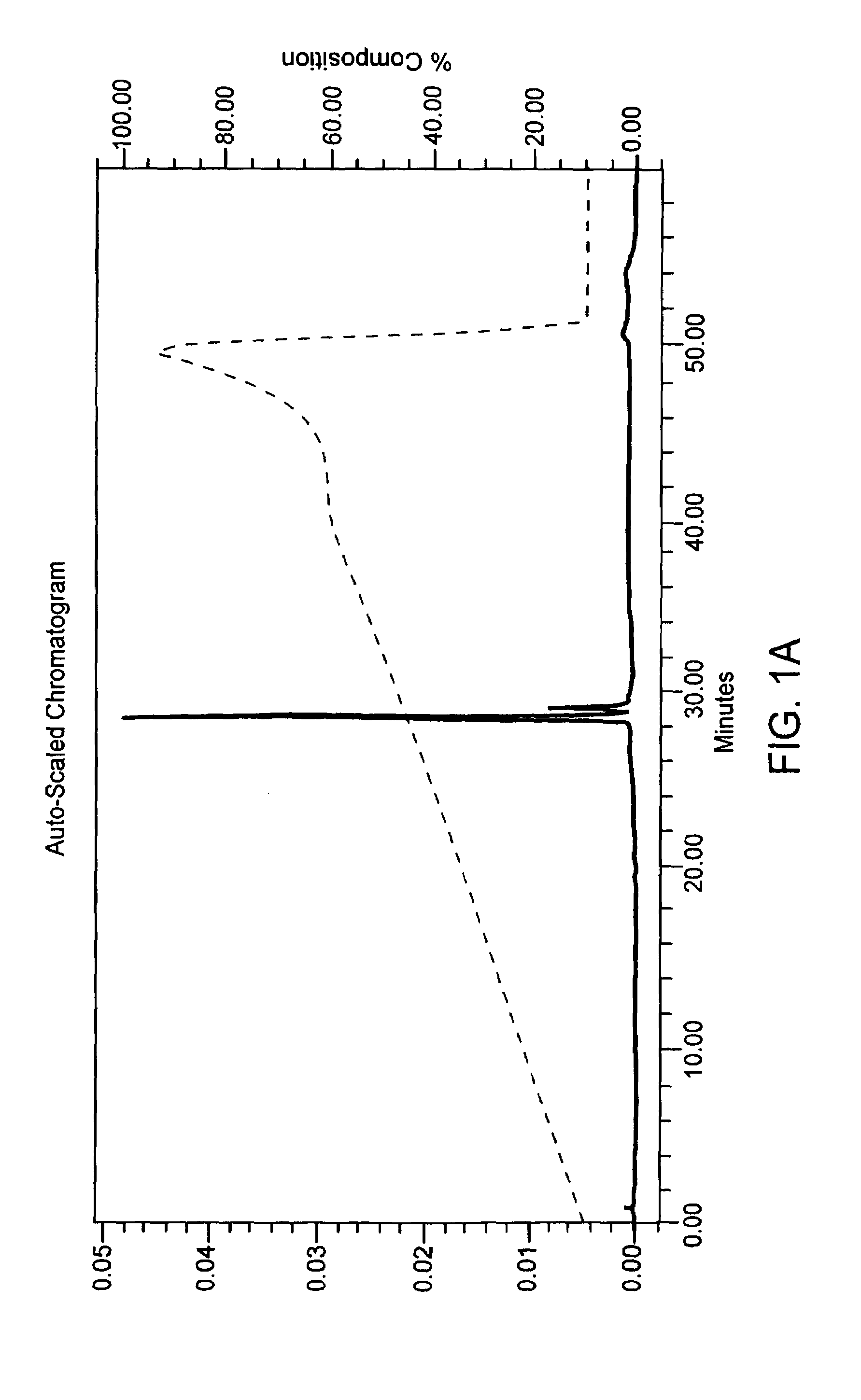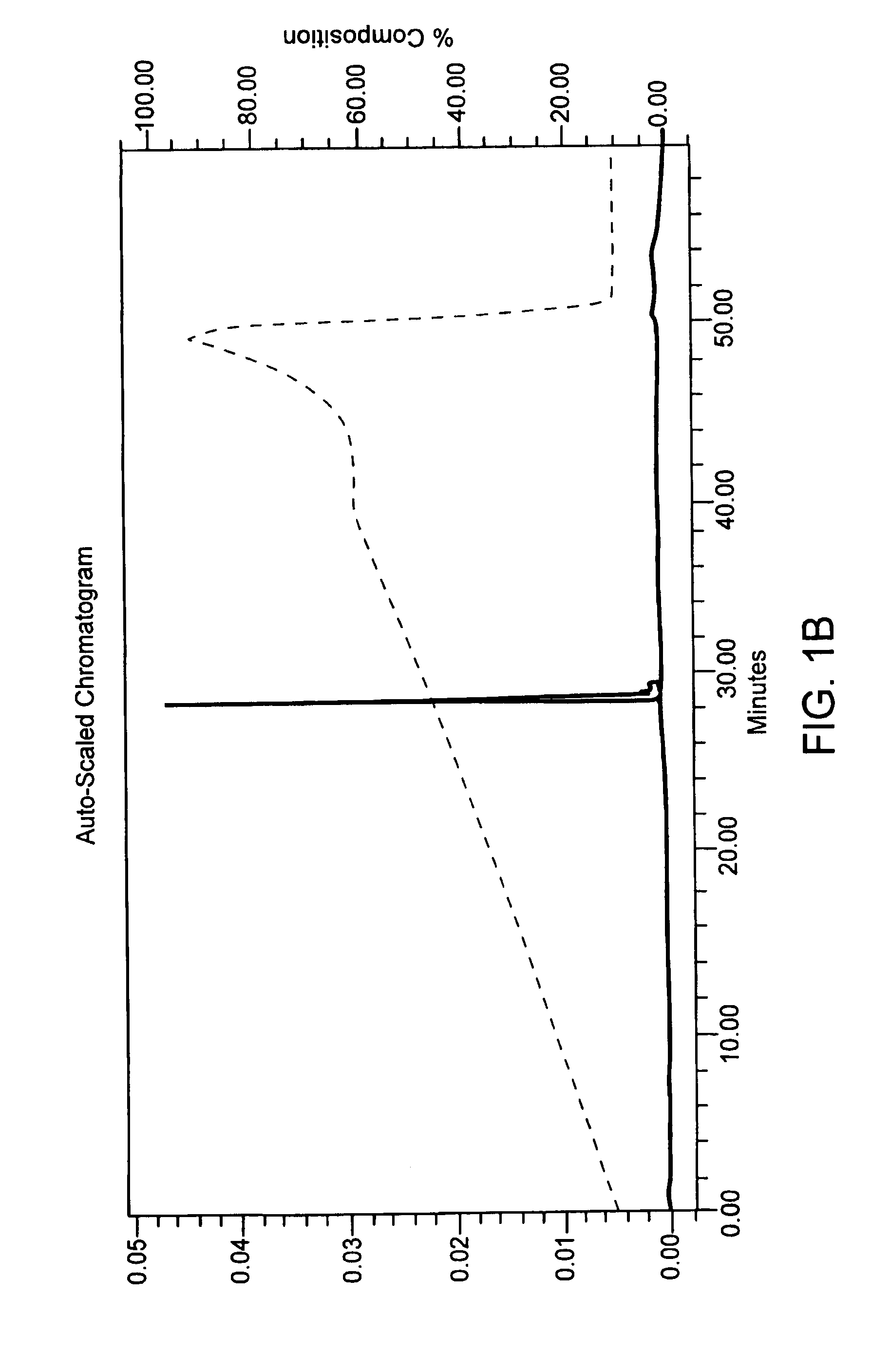Method of preventing modification of synthetic oligonucleotides
a synthetic oligonucleotide and oligonucleotide technology, applied in the field of preventing modification of synthetic oligonucleotides, can solve the problem of difficult removal of impurities structurally similar to the desired product, and achieve the effect of higher recovery of purified products
- Summary
- Abstract
- Description
- Claims
- Application Information
AI Technical Summary
Benefits of technology
Problems solved by technology
Method used
Image
Examples
example 1
Comparative Deprotection Results
[0053]A phosphate diester oligonucleotide and a phosphorothioate oligonucleotide which each had 31 thymidine bases were synthesized in two separate batches on a rigid polystyrene solid support on DNA synthesizer 8909 Expedite (Applied Biosystems) following a standard protocol for phosporamidite chemistry. The 5′-dimethoxytrityl protecting group was left on at the end of the synthesis cycle. At the end of chain elongation, solid supports with fully protected phosphate diester or phosphorothioate oligonucleotide were divided into three parts. Each part was separately treated at 50° C. for 16 hrs. with (i) concentrated ammonium hydroxide, (ii) 10% (vol / vol) t-butylamine in concentrated ammonium hydroxide, or (iii) 5% (vol / vol) DTT in concentrated ammonium hydroxide. These samples were analyzed by ion exchange HPLC and by MALDITOF mass spectrometry (see FIGS. 1A–1C and 2A–2C for results obtained with the phosphate diester oligonucleotide). In both the pho...
example 2
Two Step Deprotection Method
[0055]A phosphate diester oligonucleotide and a phosphorothioate oligonucleotide which each had 31 thymidine bases were synthesized in two separate batches on a rigid polystyrene solid support on DNA synthesizer 8909 Expedite (Applied Biosystems) following a standard protocol for phosporamidite chemistry. The 5′-dimethoxytrityl protecting group was left on at the end of the synthesis cycle. At the end of chain elongation, solid supports with fully protected phosphate diester or phosphorothioate oligonucleotide were treated with an acetonitrile solution containing 15% t-butylamine for 45 min. The support bound phosphate diester or phosphorothioate oligonucleotide was then separately treated at 50° C. for 16 hrs. with 10% (vol / vol) t-butylamine in concentrated ammonium hydroxide. These samples were analyzed by ion exchange HPLC and by MALDITOF mass spectrometry and gave similar results as those shown in FIGS. 1B and 2B for the phosphate diester oligonucleot...
PUM
| Property | Measurement | Unit |
|---|---|---|
| Temperature | aaaaa | aaaaa |
| Temperature | aaaaa | aaaaa |
| Temperature | aaaaa | aaaaa |
Abstract
Description
Claims
Application Information
 Login to View More
Login to View More - R&D
- Intellectual Property
- Life Sciences
- Materials
- Tech Scout
- Unparalleled Data Quality
- Higher Quality Content
- 60% Fewer Hallucinations
Browse by: Latest US Patents, China's latest patents, Technical Efficacy Thesaurus, Application Domain, Technology Topic, Popular Technical Reports.
© 2025 PatSnap. All rights reserved.Legal|Privacy policy|Modern Slavery Act Transparency Statement|Sitemap|About US| Contact US: help@patsnap.com



